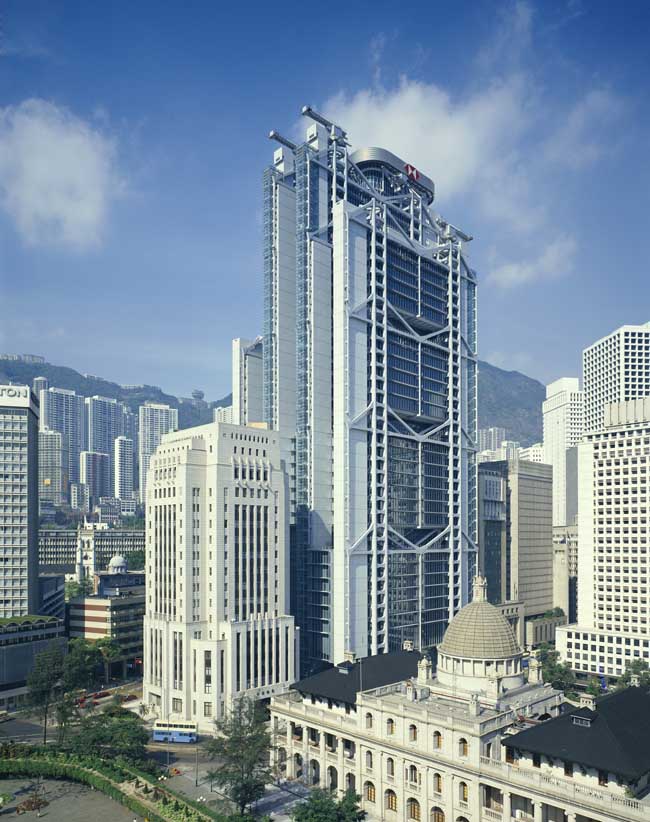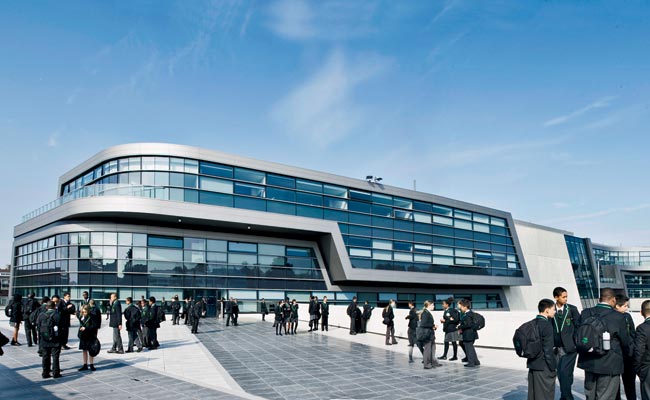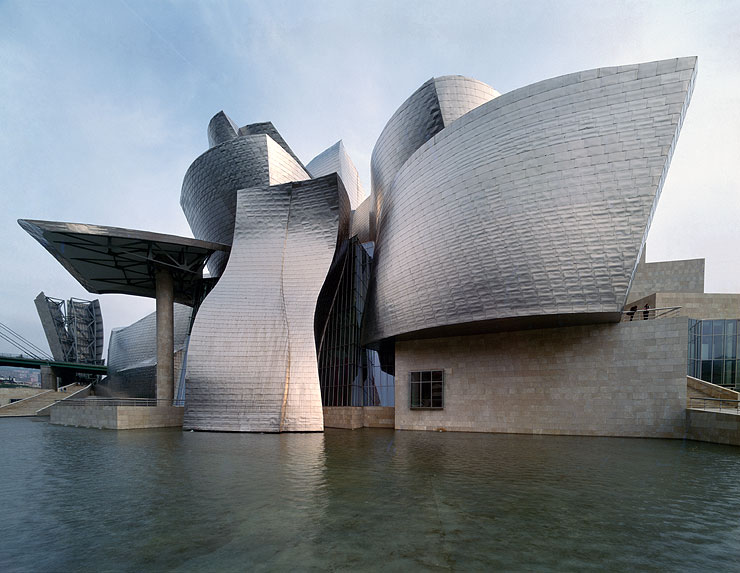|
At one point during his magisterial talk on global architecture on March 7th, Robert Adam – an architect practising “traditional” neo-classical design - showed us photographs of a series of major cities, all crammed with glass-and-metal skyscrapers, and asked us to name them. Only New York, with the Manhattan skyline, seemed familiar, whilst all the others – with their homogenous designs - looked broadly identical and could have been anywhere.
Robert told us this sameness is often the product of large international architectural practices, led by so-called “starchitects”, who service the demand for iconic buildings in order to cater for the aspirations of companies and even entire nations to promote themselves within an ever-expanding global culture. Iconic examples include the enormous HSBC bank building in Hong Kong, as well as Frank Gehry’s Guggenheim Museum, in Bilbao, northern Spain, with its inter-connecting shapes of stone, glass and titanium, which was built with the help of huge grants, but which has led to a major boost to the regional economy.

Countless other cities have followed suit, falling over themselves to hire stars like the Iraqi-British architect, Zaha Hadid, in order to present the most modern image possible to the world. Her work features fragmented geometry to evoke the chaos of modern life, and her buildings are in evidence in China, Abu Dhabi, Azerbaijan, Glashow - and even Brixton, where her design for the Evelyn Grace Academy won the 2011 Stirling Prize.

Robert himself has designed many large country houses in a “progressive classical style” at his practice in Winchester, as well as public buildings, such as the Sackler Library, adjoining the Ashmolean Museum in Oxford, where the entrance is based on the Doric Temple of Apollo at Bassae, in Greece. He has an ambivalent view of some modernism and called his talk “Globalisation and the Glass City – (how global capital makes everywhere the same”) and suggested that globalisation can drive out the uniqueness and character of cities and buildings, reducing them to a monotonous regularity, often creating disorientated and lost communities. He claimed that, on occasions, “traditional architecture” may be the most sustainable means of developing cities – and capable of reasserting community identity.
In his wide-ranging talk, Robert focused on the period 1990-2007 which he described as “the New Global Era,” with the spread of world-wide brands and the English language, and he claimed architects are now seen as “globalising professionals” within what he calls a Trans-national Capitalist Class. This group self-consciously projects images of themselves as citizens of the world, with an homogenous lifestyle, which can include jogging, a diet of grilled salmon and green salad, for instance, the ubiquitous lap-top computer, internet access – and the combination of de rigeur business suits and sportswear.

Robert also highlighted key events in world political and socio-economic history and pointed out parallels between these global periods and the development of movements in architecture. He suggested that the 17th Century Enlightenment, the rise of colonialism, the Industrial Revolution, world wars, Communism, the creation of the UN and IMF, the supremacy of North Atlantic communities, the “Summer of Love”, Thatcher and Reagan - all culminated in an explanation for the dominance of Modernism in 20th Century architecture; adopted by left-wing nations and trans-national corporations alike.
However, he claimed that architecture and urban design are service industries - minor players in the broad sweep of social and political developments – and he claimed that no major social changes can be traced back to architecture, which always follows politics and economics, not vice versa.
“Robert Adam’s talk was an impressive mix of the academic and the down-to-earth, highlighting the astonishing way in which global money has created major cities which look virtually identical. Even though there may be cultural differences on the street, these cities have allowed the construction of vast glass-and-steel monoliths – but often at the expense of local communities. However, Robert’s talk was fair-minded and his arguments persuasive, delivered with both erudition and a wry wit – Trevor Oakley, Witney
|